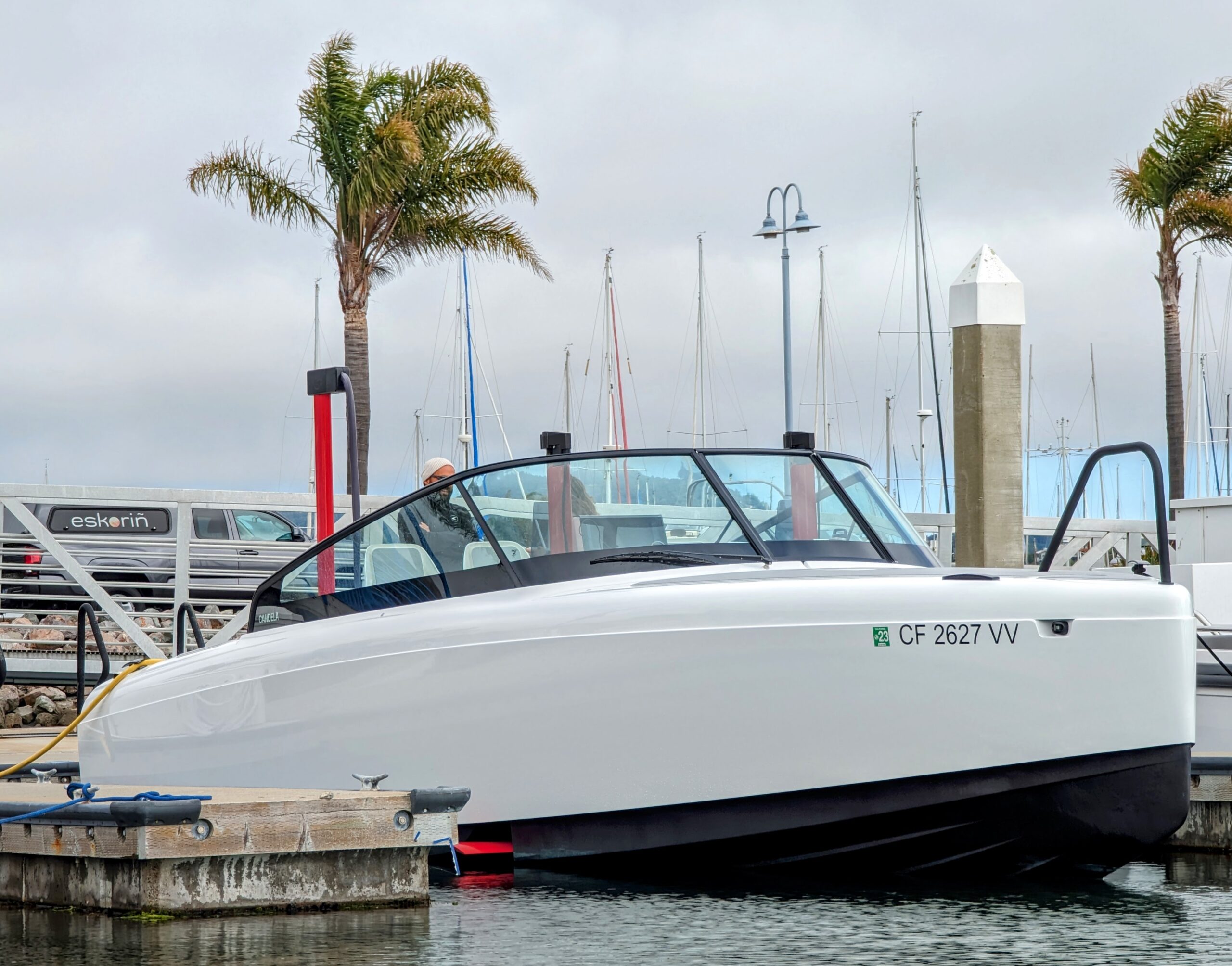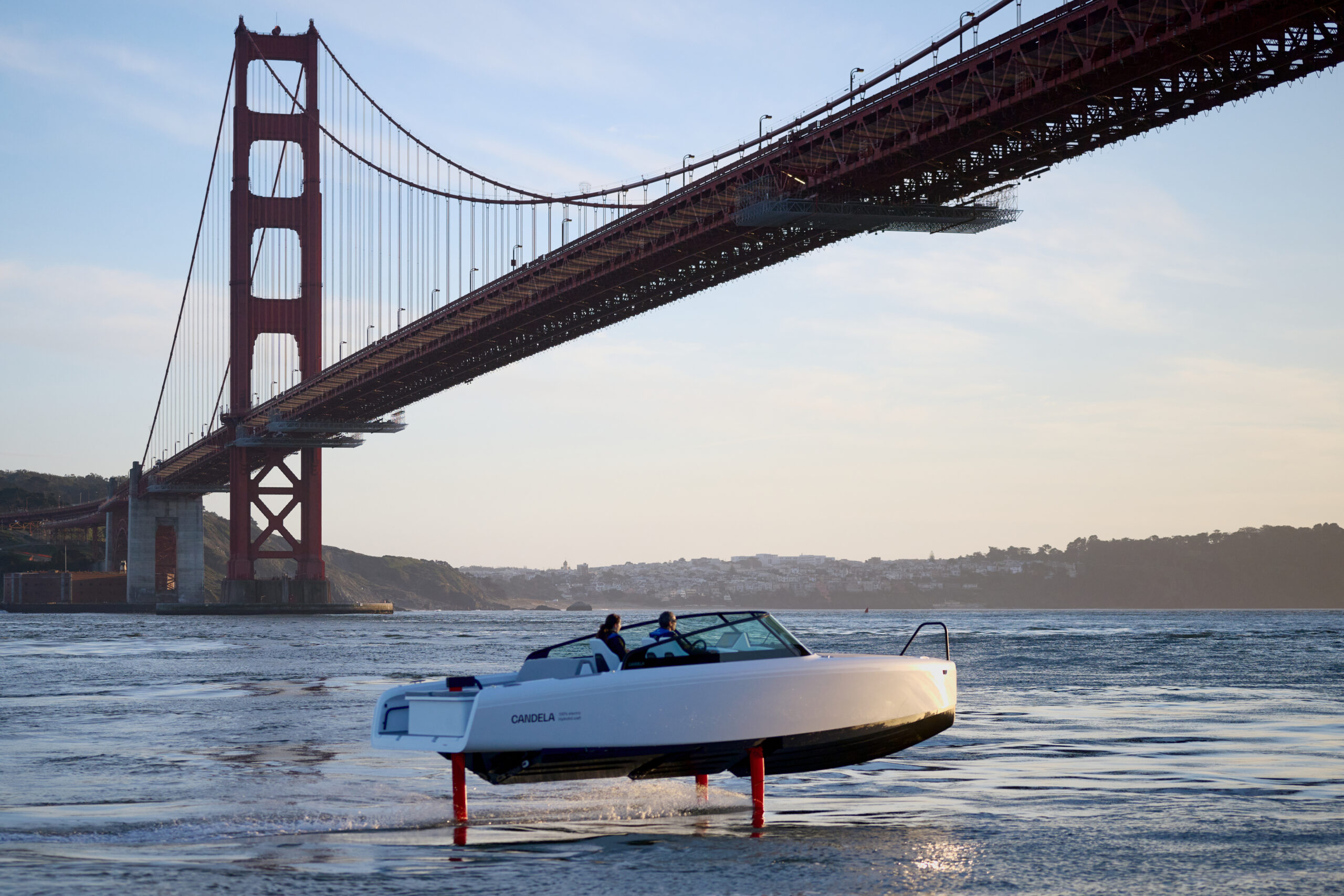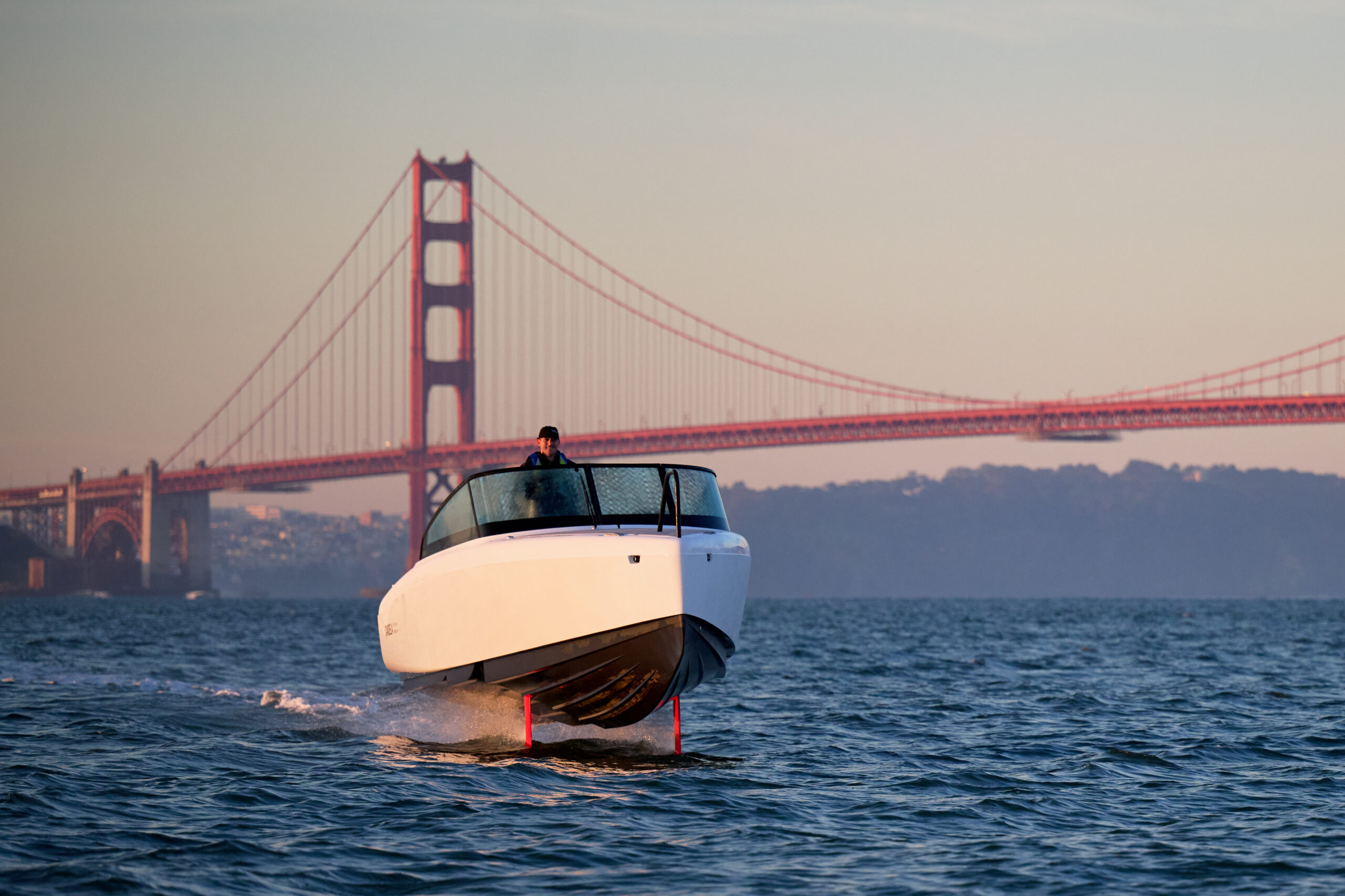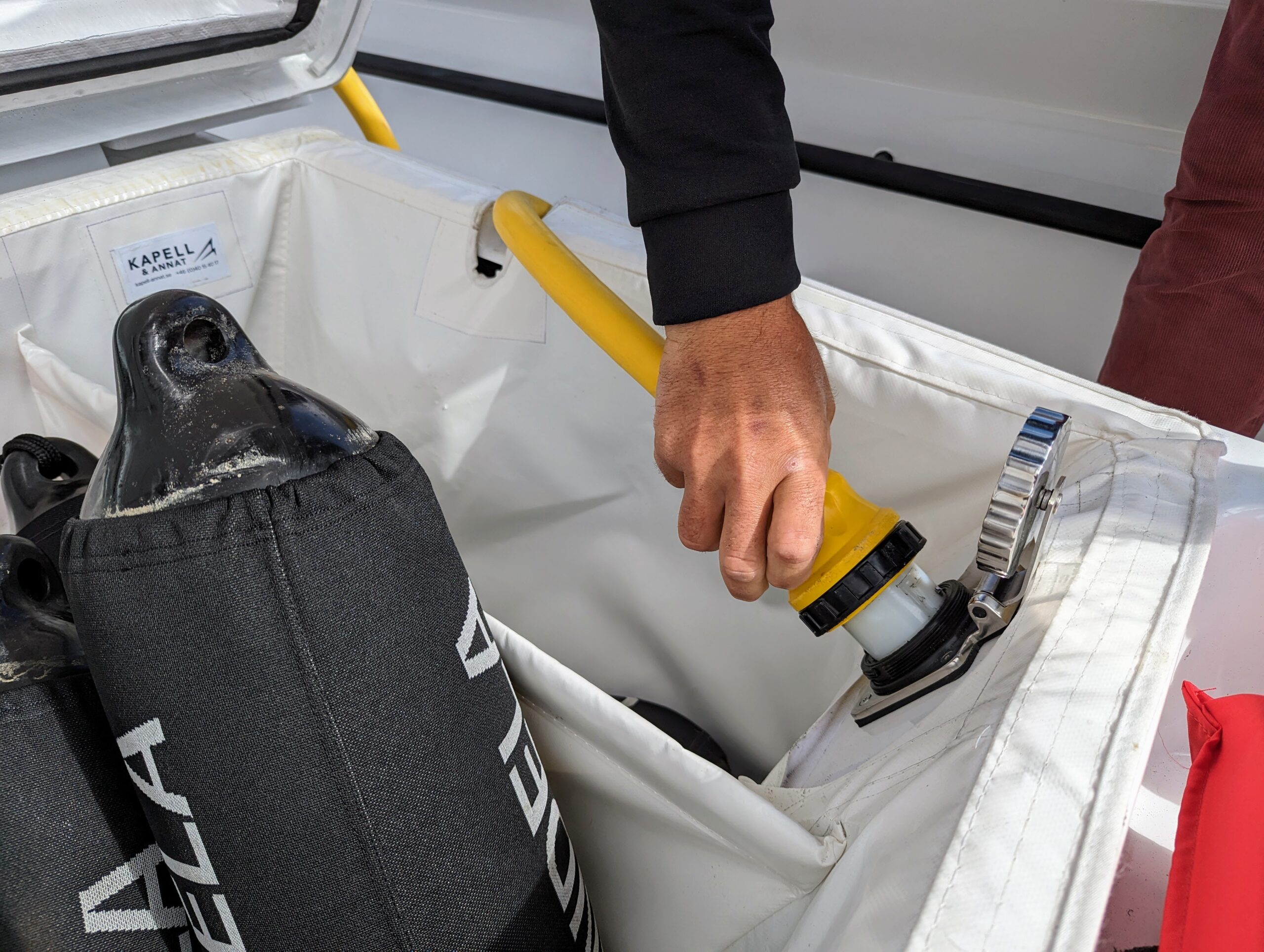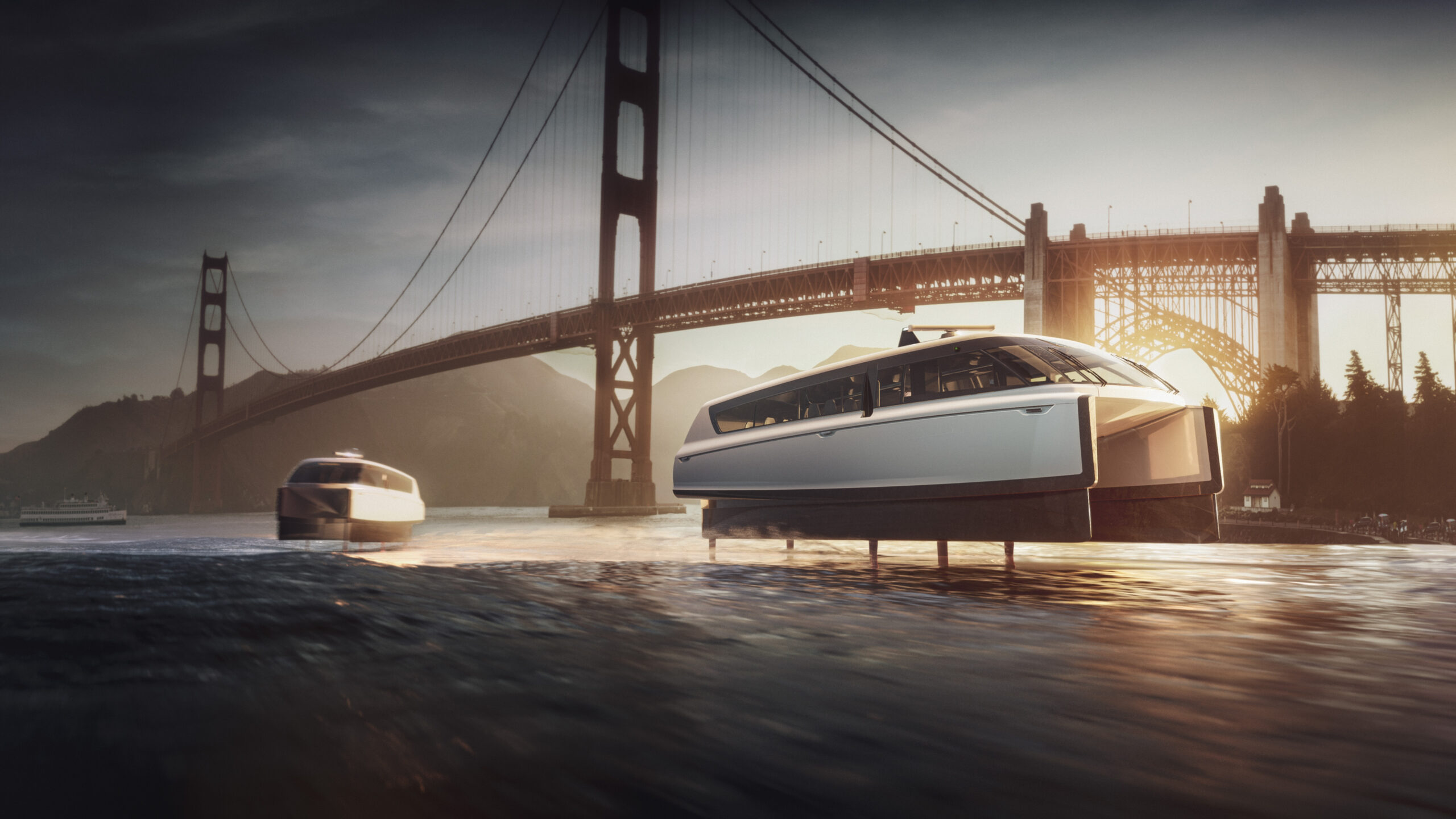
Silence is golden. Noise makes our bodies tense up. It’s stressful.
We value the lack of noise far more when coming from a loud environment into a quieter place.
Going from the city into the countryside, we notice how peaceful things are. We breathe deeper and feel more connected with our surroundings. Our minds clear out the clutter, seemingly without effort.
Boating is typically a loud experience, the drone of the motors drowning out the sound of the water, sending vibrations throughout the watercraft — and the smell of exhaust punctuating the experience.
Candela saw the opportunity early on and has been working towards a vision of fully electric, modern watercraft for years now. The Candela C-8 is the result of all that hard work and is finally available for customers to purchase. Instead of loud, inefficient combustion motors, the company dropped in its torpedo-shaped C-Pod motor assembly.
The rear “T” hydrofoil and the front “pi” foil jut down into the water when underway, serving as underwater wings to push the hull of the boat up into the air. The result of being lifted out of the water on the hydrofoils is a smoother ride and around 80% less drag. Much like aerodynamic efficiency is far more important with electric vehicles, hydrodynamics are key to the efficiency of watercraft.
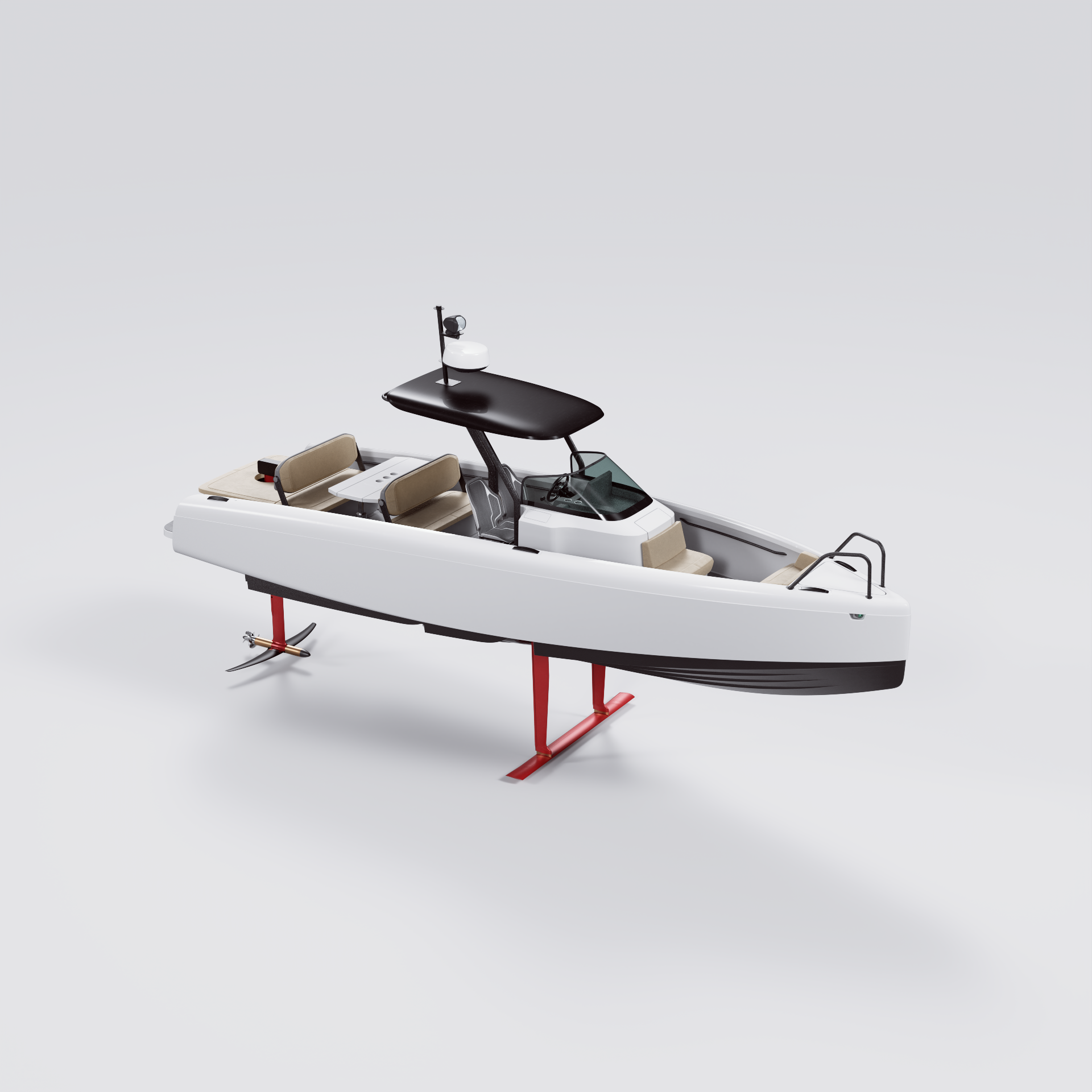
A rendering of the C-8 shown with the twin hydrofoils down and the C-Pod on the rear foil. Image courtesy of Candela.
The C-Pod and its reverse rotating props work in tandem with the hydrofoil drive system Candela developed to create a paradigm shift in boating.
Candela invited CleanTechnica up to its offices in Sausalito, California, for a demo “flight” in one of its C-8 watercraft to experience the future of boating in person. We met up at the dock and found the C-8 docked in a normal slip, looking much like any other boat.
On the surface, Candela’s vessels are well appointed and look much like traditional boats, with a few subtle exceptions. When traveling through shallow water, the three red struts supporting the hydrofoils retract up out of the water, jutting prominently into the air. Heading into deeper water, the struts push down into the water on a motor actuated screw, pushing the hydrofoils down into the water. The twin motors on the C-8 live on the rear T foil and provide nearly silent electric propulsion for the vessel.
As the vehicle accelerates from harbor cruising speeds of 5–8 knots up to cruising speeds above 14 knots, the hydrofoils begin producing lift, pushing the hull of the boat up out of if the water as it achieves “flight.” The effect of taking flight sounds like a bit of marketing hype, and the whole concept of going for a flight on a boat felt overblown. Until we took off.
As the speed increased, the boat’s onboard control system automagically initiated the flight sequence. The motors spooled up, the hydrofoils engaged, lifting the hull magically out of the water. Behind the boat, the standard wake being produced when moving through the water in the water all but disappeared, replaced by an innocuous single line tailing behind the boat with very little surface disturbance being generated.
The noise of water bumping against the front of the hull disappeared, allowing the slight whir of the electric motor to be heard for the first time. Locating the electric motors in the water on the rear foil insulates passengers from most of the noise they produce. This translates to an extremely smooth, nearly silent ride that feels like a dream.
I was a believer. Instantly. The experience was transformative. The EV smile that took over my face when I first drove a four-wheeled electric vehicle was back. The future of boating is electrically powered and hydrofoils are engineering marvels. Waves were reduced to minor disturbances as the hydrofoils glide silently a few feet under the surface. Check out the video below for a side by side comparison of traditional boats and a hydrofoil-enabled Candela C-8.
It was like having all the benefits of silent sailing but with all the power of a motorboat. The underwater foils push the boat up into the air, and even when turning, it feels like you’re simply gliding or skipping along the surface of the ocean. The ripples and waves that would normally bump up against the hull, adding noise and bumps to the ride, were little more than something to look at as we glided over them.
Much like in an electric vehicle, the silent electric motors propelled us to a healthy 22 knot clip, but it didn’t feel like it at all because it was so smooth. In a traditional motorboat, 22 knots would feel much faster as the waves bumped up against the hull, the motor growling and vibrating the shell of the boat.
In the C-8, 22 knots felt like nothing. We were blasting along with only the slightest bumps from the adjustments automatically made by the foils to maintain balance. Your eyes can sense the motion, but the flying experience on the C-8 is so silent and smooth that it’s deceptive. It’s easy to imagine early owners needing a bit of time to get used to the speed at which they’re traveling when up on the foils.
Candela’s twin motor C-8 currently packs a 69 kWh battery pack from Polestar that delivers a range of 57 nautical miles per charge at a speed of 22 knots. That’s a healthy start for the average enthusiast boat owner in this price range, though it does fall short of the ~300 mile range from a typical tank of petrol.
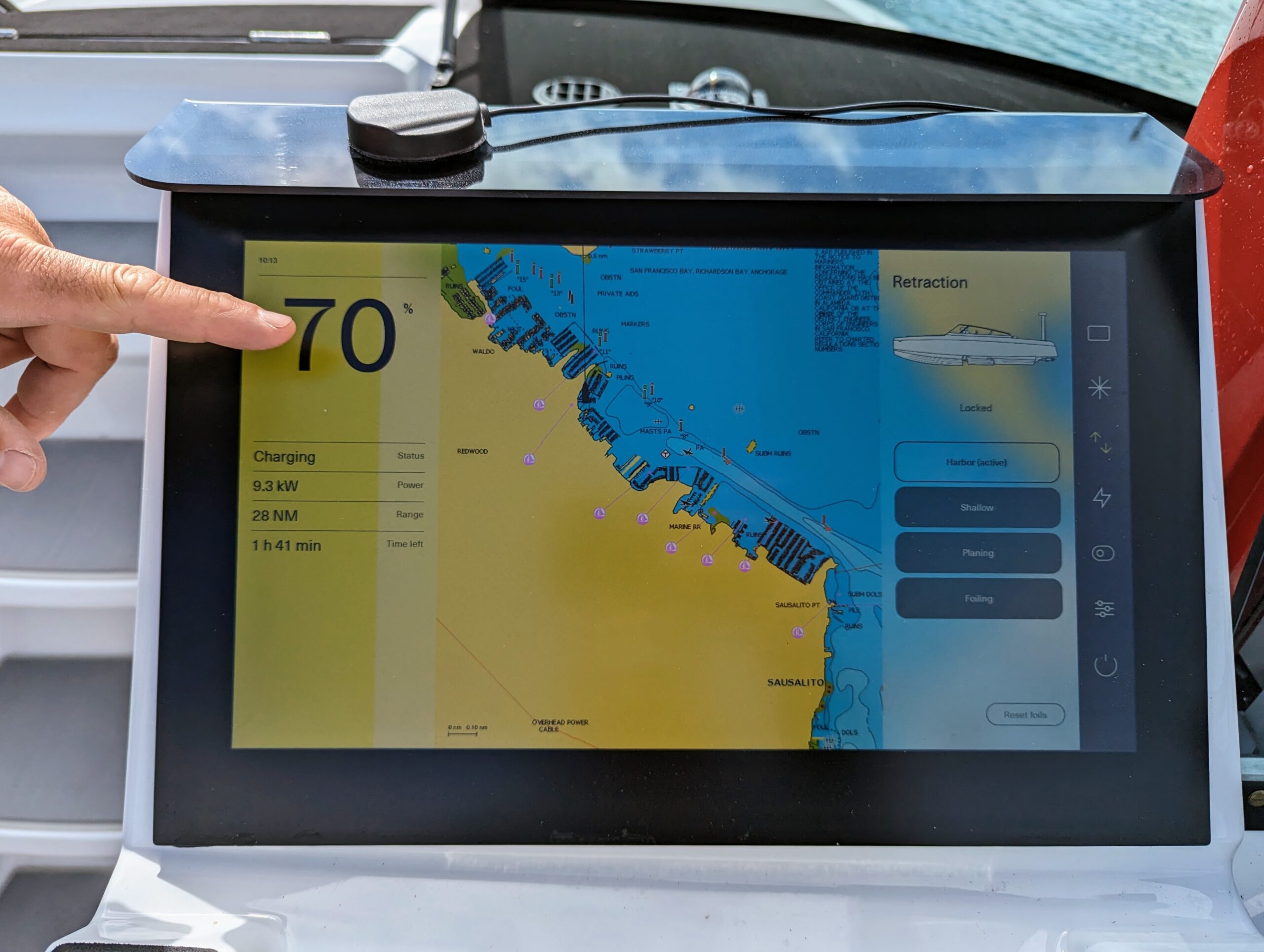
Candela’s control system was developed in-house with all controls integrated into a single touchscreen. Image credit by Kyle Field, CleanTechnica
It is still early days for the electric boating industry. The next generation of the C-8 will come with CCS1 DC fast charging capability and the first round of chargers are already being installed by emerging marine fast charging network operator Aqua superPower. It’s not hard to imagine flying down the coast in a C-8 to the next port of call where you can grab lunch and a quick charge.
In addition to the DC fast charging option, many slips already offer shore power whether in the form of 110 volt, 15 amp power, or even higher-power 240 volt, 30 amp, or 50 amp options. It’s not intuitive until you think about it, but the same power outlets that enable people to live on their boats can also be used to charge the onboard batteries in the Candela C-8. It’s a lot like charging an EV at an RV park when you think about it.
The C-8 is available starting at $395,000 in a few different configurations depending on buyer preference. This includes shipping and import fees. Boating is expensive and has always been expensive. At these prices, the C-8 is clearly still for more well off customers, but that’s just how the EV revolution started. Build low-volume, higher-MSRP vehicles and use the higher margins to pay for the cutting-edge tech. As volumes grow, the price will come down over time.
In parallel to the C-8, Candela is developing the P-12 Shuttle, a ferry style boat for commercial operation. It’s not hard to imagine one of these whizzing back and forth across the San Francisco Bay, taking passengers from Sausalito to downtown San Francisco to Oakland or somewhere similar. Large bodies of water are often seen as obstacles for vehicle traffic to go around, but installing fully electric high-frequency ferries is a great solution to reduce traffic on the already congested freeways weaving across the area while offering a better experience with zero emissions.
Candela has achieved quite a milestone with the C-8 and continues to improved its technology and solutions with each revision. World changing technologies don’t burst onto the scene overnight, but rather, they are forged with consistent effort day after day, week after week, month after month, and year by year.
For more information about the Candela C-8 and the Candela P-12 Shuttle, head over to their website.
Disclaimer: Candela paid for the author’s travel to attend this event.
I don’t like paywalls. You don’t like paywalls. Who likes paywalls? Here at CleanTechnica, we implemented a limited paywall for a while, but it always felt wrong — and it was always tough to decide what we should put behind there. In theory, your most exclusive and best content goes behind a paywall. But then fewer people read it! We just don’t like paywalls, and so we’ve decided to ditch ours. Unfortunately, the media business is still a tough, cut-throat business with tiny margins. It’s a never-ending Olympic challenge to stay above water or even perhaps — gasp — grow. So …

